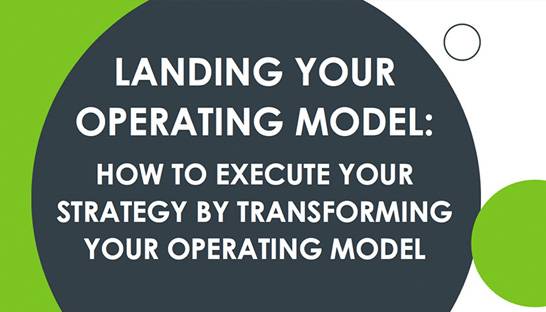[ad_1]
For any organization struggling to overcome the Covid-19 crisis, a robust operating model – the means by which the organization’s strategy can be executed – is critical to strategy execution. Tom Leary, Vickesh Kambaran and Isabelle Smith from Q5 in Australia share a number of lessons for implementing an operational model.
In a recession, revenue typically declines or shifts across channels, and tremendous pressure is placed on an organization’s cost base. The process of defining a robust operating model serves to clarify the relationship between cost and value and ensure that resources are allocated to areas that will see the greatest return.
Furthermore, the operational model describes not only what needs to happen where, but also how it needs to happen in an efficient and effective manner. When implementing a new or revising an operating model, here are five identified factors that we know contribute to organizational success.

Active sponsoring: Successfully designing and implementing a new operating model requires an ambitious and committed sponsor with the right profile and seniority to align everyone with a strong vision, bring the right people into the tent and help them overcome obstacles. Ideally, the best person to fill this role is the CEO.
Balanced and bought leads: Your executive team needs to have an honest and comprehensive understanding of where you are as an organization today, where you are trying to go, and why. They must also be prepared to engage in some difficult discussions about the appropriate operating model for the future. Without their support, your new operating model will remain a drawing on a piece of paper.
A true understanding of the economics of your business: This is not a purely financial exercise. The most successful organizations understand how to connect products, people, activities and financial information to provide a true picture of how the organization is performing. This helps to establish a true starting position (eg objective product profitability with bottom-up cost allocation) and provides the ability to model and test a future desired state.
Interdisciplinary and structured design methods: The most successful enterprise operating model designs we have delivered have been based on cross-functional teams to ensure there is sufficient representation of skills and experience across the business to help build the case for the change you are about to undergo. Successful projects are also usually supported by a robust and clear design methodology that guides them through the process and provides a roadmap to follow
Internal ownership: The design of operational models is a specific area of expertise that many organizations choose not to build in-house. In these cases, it might make sense to rely on external experts to help you manage and shape the process and achieve optimal results. But that doesn’t replace the need for internal ownership – if people in your business don’t own the change, they’re unlikely to embrace it, let alone drive it once support leaves the building.
[ad_2]


